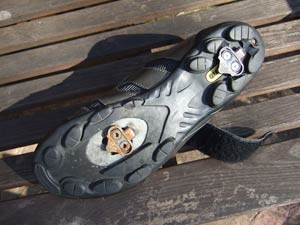 |
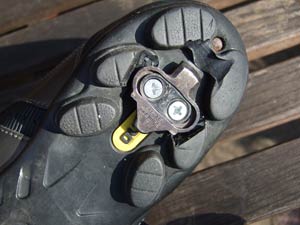 |
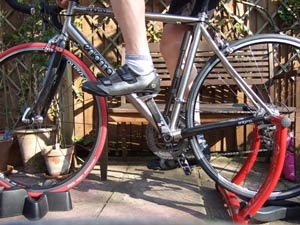 |
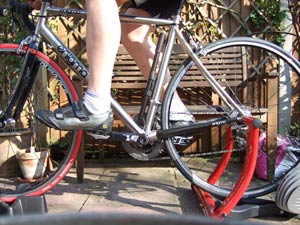 |
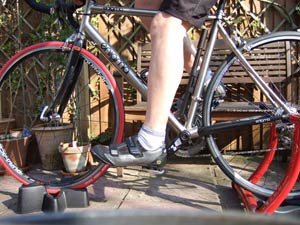 |
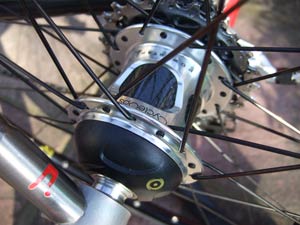 |
Foot positioning on the pedal has been the subject of considerable research in the world of cycling biomechanics over the last couple of years, spurred by studies such as that by Litzenberger, Illes, Hren, Reichel and Sabo at the Fachhochschule Technikum Wien University of Applied Sciences, Vienna.
The latest piece of research in the field, carried out by Professor Heinrich Hassenforder of the Fachhochschule Technikum at the University of Villigen-Schwennigen has gone even further and, in doing so, has demonstrated that it is a relatively simple matter to improve the power output of even highly-trained racing cyclists by between 15 and 16%.
Previous work centred on the idea of positioning the pedal beneath the metatarsus (tarsometatarsal position) in order to reduce torque in the ankle-joint and thus reduce muscular activity in the lower limb. According to Professor Hassenforder, this research failed to show any real advantage simply because it did not go far enough.
“I decided to take this idea to the extreme, reasoning that if putting the foot a little forward produces a little improvement, then putting it as far forward on the pedal as possible must produce the maximum possible benefit. Imagine my surprise when I found that the resulting increase in power ouput was such that I may, despite being 62 years old and in only moderate condition, take part in the world masters’ pursuit championship for my age group this year.”
His breakthrough, reported in a small-circulation German cycling club newsletter and thuse missed by much of the world’s cycling media, builds on recent research that has shown that even top cyclists neither deliver constant crank-torque nor flex the ankle excessively. Considering these facts and making biomechanical considerations it seems possible that much of the muscular output of the lower limb is used exclusively to stabilize the ankle. Torque in the ankle joint is – due to the long lever arm – fairly high.
By repositioning the pedal cleat on the heel of the shoe – a technique the professor calls ‘Heel Pedalling’, the torque in the ankle joint is effectively reversed, allowing the powerful anterior tibialis and extensor digitorum longis muscles to pull the forefoot upwards and thus force the heel down. This not only focuses the high pressures generated by cycling on the heel, which is well-adapted to such work, but optimizes the entire pedal stroke for high-cadence, high torque output.
RoadCyclingUK decided to put the theory to the test. We screwed a pair of Shimano SM-SH51 mtb cleats to the heels of an old pair of shoes using countersunk self-tapping screws trimmed to length. The rubber sole was also trimmed to permit easy entry and exit with SPD pedals.
Not wishing to be the subject of ridicule, we carried out the test on a turbo trainer on the privacy of out own back yard, measuring power output using a Cyclops PowerTap hub.
According to Professor Hassenforder, a major advantage of the new cleat position is that it allows the standard cleat to be retained, in turn permitting the cyclist new to Heel Pedalling to take an occasional rest by reverting to the conventional pedal position. This allowed us to make a direct comparison without excessive time out for adjustments.
Initial results were very encouraging; sustaining a pulse of 158bpm, the test subject averaged 327W for two minutes with conventional foot placement and 379W for the same duration with Heel Pedalling, which correlated closely with the 15% power gain claimed by the professor.
Given the ease with which the change can be made, we expect this new technique to be widely taken up and will be trialling it extensively in a wide range of riding conditions.
The only possible drawback we can see is the difficulty of heel mounting any other cleat design than the SPD type. Given the power gain, few cyclists will hesitate to make the move to SPD shoes and steel cleats.





